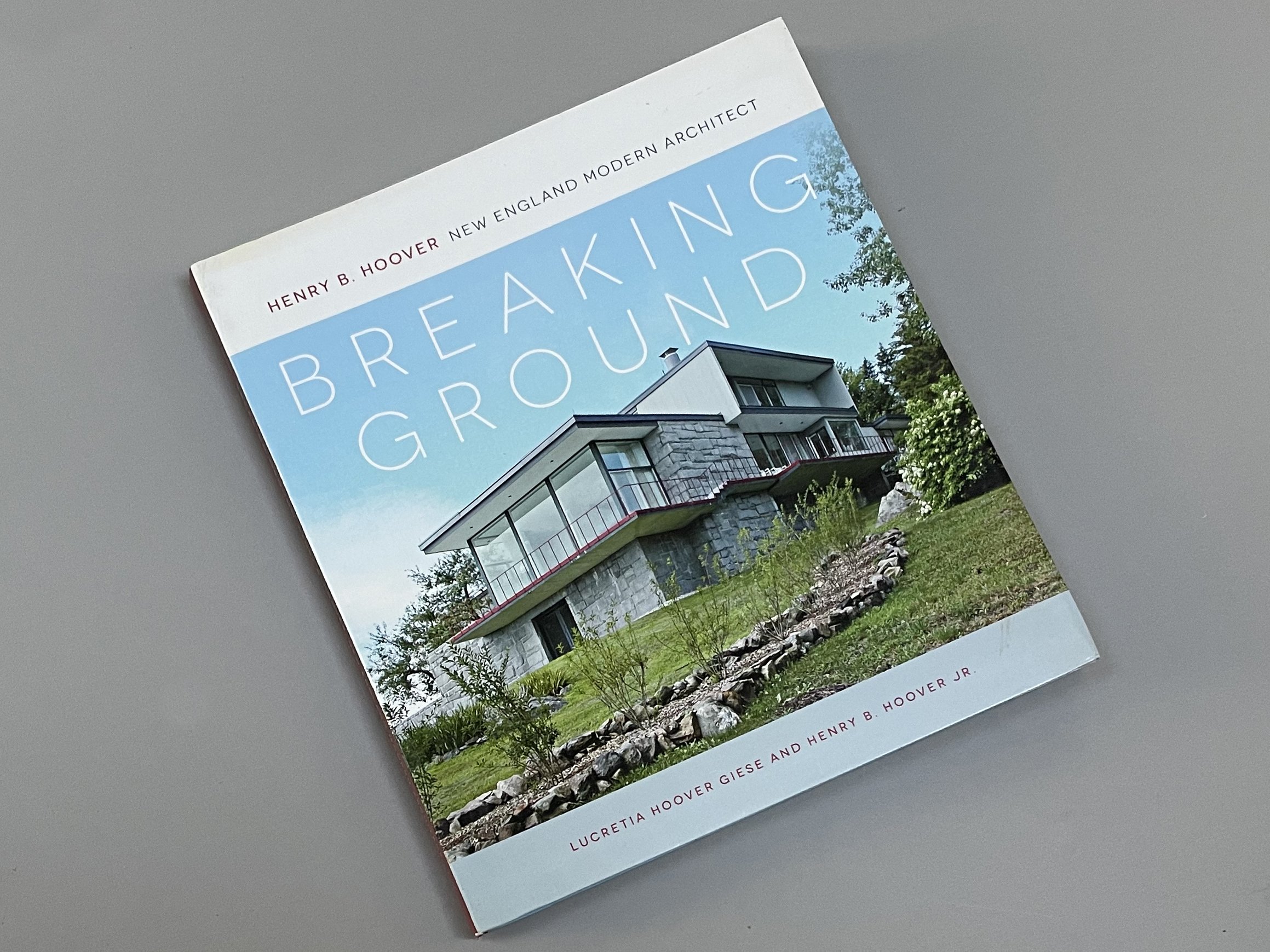 Image 1 of 6
Image 1 of 6

 Image 2 of 6
Image 2 of 6

 Image 3 of 6
Image 3 of 6

 Image 4 of 6
Image 4 of 6

 Image 5 of 6
Image 5 of 6

 Image 6 of 6
Image 6 of 6







Breaking Gound: Henry B. Hoover New England Modern Architect
By Lucretia Hoover Giese and Henry B. Hoover, Jr.
This beautifully illustrated book chronicles the life and work of New England-based modern architect Henry B. Hoover. Hoover’s practice demonstrates how he utilized, transformed, and individualized prevailing Beaux-Arts architectural training of the 1920s to achieve a modern residential architecture informed by—but different from—the normative (Bauhaus driven) idea of modern architecture. Hoover’s practice additionally provides a valuable example of the importance of the influence of landscape architecture on stylistic development. Because he worked with landscape architect Fletcher Steele for more than a decade, it is not surprising that in Hoover’s residential architecture siting is paramount. His clients sought a particular synthesis of the exceptional and the livable in houses that spoke to and of the New England landscape and were tailored to their site. The story of Hoover’s long career is therefore one of an American-trained architect who in the late 1930s initiated his “brand” of modern architecture in New England. His work, maturing in the 1950s and continuing well into the third quarter of the twentieth century, is a testament to an underappreciated genre of regional architecture.
By Lucretia Hoover Giese and Henry B. Hoover, Jr.
This beautifully illustrated book chronicles the life and work of New England-based modern architect Henry B. Hoover. Hoover’s practice demonstrates how he utilized, transformed, and individualized prevailing Beaux-Arts architectural training of the 1920s to achieve a modern residential architecture informed by—but different from—the normative (Bauhaus driven) idea of modern architecture. Hoover’s practice additionally provides a valuable example of the importance of the influence of landscape architecture on stylistic development. Because he worked with landscape architect Fletcher Steele for more than a decade, it is not surprising that in Hoover’s residential architecture siting is paramount. His clients sought a particular synthesis of the exceptional and the livable in houses that spoke to and of the New England landscape and were tailored to their site. The story of Hoover’s long career is therefore one of an American-trained architect who in the late 1930s initiated his “brand” of modern architecture in New England. His work, maturing in the 1950s and continuing well into the third quarter of the twentieth century, is a testament to an underappreciated genre of regional architecture.